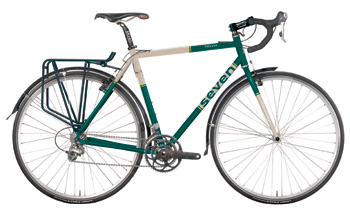Last week, we saw the set up for Zand’s expedition. This week, we’re underway.
The Altai Mountains are quite probably where skiing was conceived, not in the modern form we know, which originated in Scandinavia, but in a more elemental way, practiced by the indigenous people of Central Asia. Zand’s expedition sought out some of the terra prima of skiing, but approached all the overland travel by bike. To get into the mountains, Zand and his partner first had to ride the Chuysky Trakt. Zand’s own words below.
This road, the Chuysky Trakt, was cut through the mountains in the 1930s by gulag inmates, and runs 1000km from the Trans-Siberian Railroad to the Mongolian border. We began in Gorno-Altaisk, the capital of the semi-autonomous Altai Republic, and will steadily gain elevation until we reach the highlands of Mongolia.
Across the pass, we push bikes along a snow drifted ribbon of cracked asphalt to the half-abandoned Soviet-era ski base atop Seminsky. We nearly missed it in the low cloud, but on emerging from the ail, the sun had made an effort and a few cuts were revealed on the mountainside.The road drops down and we find our way over plateau and valley back to the Katun, and a cold, dry steppe climate. The road is good, and easy to navigate: if you leave the spiderwebbed asphalt, you are going the wrong way. This 500 kilometer line runs through the heart of the range, and we follow it over passes and through small log villages clustered around shingled rivers.
Confederations of sheep and goats wander thawing hillsides under the occasional watch of dog and motorcycle-borne shepherd. Cows and pigs march the paddocks closer to home, though the pigs fade from prominence as we transition to a Muslim minority in the mixed ethnic map of Russian, Altai, and Kazakh. The Altai here is religiously diverse, with Russian Orthodox, Islam, Tengrism, Tibetan Buddhism, and less organized belief systems often called Shamanism, but really more a blend of animism and ancestor reverence.
As we leave the Katun Valley for the last time and begin to ascend the Chuya, we pass our last church in Aktash village and enter the Chuya steppe, a dry, barren, high altitude grassland hemmed in by mountains. Entering the frontier town of Koch Agash, we pass our first mosque, a humble green timber affair with a crescent moon of beaten sheet metal on the peak of the hall.
Here, we plan our first extended foray into the mountains.

